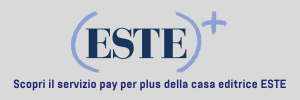
Measuring employability in public workforce systems: an alternative approach. La bibliografia
Pubblichiamo di seguito la bibliografia completa dell’articolo “Measuring employability in public workforce systems: an alternative approach”, scritto da Brian Holland sul numero di Settembre-Ottobre 2020 di Sviluppo&Organizzazione.
Barghaus K.M., Bradlow E.T., McMaken J. and Rikoon S.H. (2012), “Assessing and measuring workforce readiness: A discussion toward the development of a universal and valid measure”, in L.W. Perna (Ed.), Preparing today’s students for tomorrow’s jobs in metropolitan America, University of Pennsylvania Press, Philadelphia, 37-56,
Bond G.R., Becker D.R., Drake,R.E. and Vogler K.M. (1997), “A fidelity scale for the individual placement and support model of supported employment”, Rehabilitation Counseling Bulletin, 40, 265-284.
Camara W. (2013), “Defining and measuring college and career readiness: A validation framework”, Educational Measurement: Issues and Practice, 32(4), 16-27.
Forrier A. and Sels L. (2003), “The concept of employability: A complex mosaic”, International Journal of Human Resources Development and Management, 3(2), 102-124.
Fugate M., Kinicki A.J. and Ashforth B.E. (2004), “Employability: A psycho-social construct, its dimensions and applications”, Journal of Vocational Behavior, 65(1), 14-38.
Harvey L. (2001), “Defining and measuring employability”, Quality in Higher Education, 7(2), 97-109.
Henly J.R. (2000), “Mismatch in the low-wage labor market: Job search perspective”, in K. Kaye and D.S. Nightingale (Eds.), The low-wage labor market: Challenges and opportunities for economic self-sufficiency, US Department of Health and Human Services, Office of the Secretary, Assistant Secretary for Planning and Evaluation, Washington, DC, 145-167.
Hillage J. and Pollard E. (1998), “Employability: Developing a framework for policy analysis”, Issue Brief #85 for the UK Department of Education and Employment.
Holland B. (2015), “A workforce development systems model for unemployed job seekers”, Journal of Adult and Continuing Education, 21(2), 55-76.
Holland B. (2016), “Both sides now: Toward the dual customer approach under the Workforce Innovation and Opportunity Act in the United States”, Local Economy, 31(3), 424-441.
Holland B. (2019), “The design and uses of an employability index to evaluate the vertical workforce development process”, New Horizons in Adult Education and Human Resource Development, 31(2), 41-59.
Hong P.Y.P. (2013), “Toward a client-centered benchmark for self-sufficiency: Evaluating the ‘process’ of becoming job ready”, Journal of Community Practice, 21(4), 356-378.
Hong P.Y.P., Choi S. and Key,W. (2018), “Psychological self-sufficiency: A bottom-up theory of change in workforce development”, Social Work Research, 42(1), 22-32.
Jacobs R.L. and Hawley J.D. (2009), “The emergence of ‘workforce development’: definition, conceptual boundaries and implications”, International Handbook of Education for the Changing World of Work, 2537-2552.
McCardle S., Waters L., Briscoe J.P. and Hall D.T.T. (2007), “Employability during unemployment: Adaptability, career identity and human and social capital”, Journal of Vocational Behavior, 71(2), 247-264.
Naemi B., Burrus J., Kyllonen P.C. and Roberts R.D. (2012), “Building a case to develop noncognitive assessment products and services targeting workforce readiness at ETS”, Research Memorandum RM-12-23, Princeton, NJ: Educational Testing Service (ETS).
O’Neil Jr., H.F. and O’Neil H.F. (2014), Workforce readiness: Competencies and assessment, Psychology Press, New York.
Rothwell A. and Arnold J. (2007), Self-perceived employability: Development and validation of a scale”, Personnel Review, 36(1), 23-41.
L’articolo integrale è pubblicato sul numero di Settembre-Ottobre 2020 di Sviluppo&Organizzazione.
Per informazioni sull’acquisto di copie e abbonamenti scrivi a daniela.bobbiese@este.it (tel. 02.91434400).








